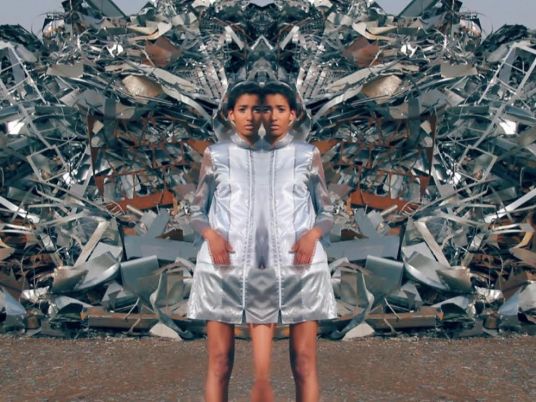Ceramic installations, ballet dancers, whirling dervishes and other artwork are currently exhibited at Beit el-Omma, a cultural center housed in a building that once belonged to Saad Zaghloul, the leader of Egypt’s 1919 revolution against British rule.
ven though the gallery hosts a joint exhibition, the way the premises are organized with its many almost private rooms give the artists–Amany Fawzy, Bassam el-Zoghby, Alaa Nagm and Shaimaa Reda–the feel of a solo exhibition, which seems to be appreciated.
Fawzy, a professor of ceramics at the faculty of fine arts at Ain Shams University, showcases her ceramic pieces in the last room of the gallery. “I participated in many collective exhibitions before, and today for the first time I am having a solo one,” she says delightedly.
In her "private" exhibition space, among oblong and round ceramic vases exhibited along both sides of the long narrow room, Fawzy says she has created "a drama from something very simple."
She insisted on her work being displayed exactly as she wanted, to create a vision of grandeur. At the far end of the room, shining under LED lights, appears Fawzy’s artistic consecration, an installation of ceramic balls and iron sticks that oozes poetry and lightness.
“I did every thing from scratch, from the ceramic balls and the glaze that partly or entirely covers them,” says Fawzy. The drama she means to evoke has been orchestrated by a clever and aesthetic combination of simple, round ceramic balls covered by a thin layer of white glaze. Some of them hang from the ceiling thanks to a discreet fishing line, while others are stuck on iron sticks, firmly rooted in the grey pebble ground.
The next exhibition space showcases the photographic works of press photographer Bassam el-Zohby. The pictures exhibited take a different approach from the one he uses in his day job.
“All photojournalists like me have an artistic side, and this series of pictures where I played with light and movement is entirely disconnected from my work,” explains the artist.
Most of the pictures on canvas exhibited in the room involve the theme of dance, and focus on movement, light and colors. “The universe of ballet and contemporary dance is fascinating for a photographer because the body motions are decomposed and sublimated by stripes of shocking colors and sudden motions,” el-Zoghby says.
The most striking aspect of the artist’s work is the whirling movement his pictures depict, a spiral shape that temporarily erases the characters themselves, allowing one to focus on their movement and energy. The colors smear and the movement is magnified and multiplied by the artist, as if his camera meant to catch the dancers’ souls.
“When I work, I focus primarily on combining movement and light […] the colors are the third aspect that comes into consideration,” el-Zoghby says.
A few meters further, a third private exhibition room plunges the viewer into another, completely different artistic environment. Artist Alaa Nagm’s eight art pieces on canvas are a mix of recurrent shades and patterns filled with mysterious symbols and signs that disturb the viewer.
Grey, red and black dominate Nagm’s work, which evidently uses repetition as a key to understanding. Some pieces clearly tell a story, and use the technique of comic books to decompose a scene.
The universe Nagm creates through his work is filled with fright, anger and despair, emotions that his reappearing characters express very clearly–the panicking face of a drowning man encircled by ferocious dark waves, or a woman white with fright covering her mouth with feeble hands.
The last creative universe the visitor can enter at Beit el-Omma is Shaimaa Reda’s fascination with whirling dervishes. Using the most basic and simple tool–a pencil–she beautifully draws the dancing shapes of the dervishes, their white robes lifted and blown by air, their arms stretched out in a trance and their conical felt hats attracting the light. Reda particularly focuses on the rays from the moonlight falling on the characters’ pleated robes and smooth expressions.
The exhibition can be viewed until 25 February at Saad Zaghloul Cultural Center–Beit el-Omma Museum (2, Saad Zaghloul Street) from 10 AM to 2 PM and from 5 PM to 9 PM.




